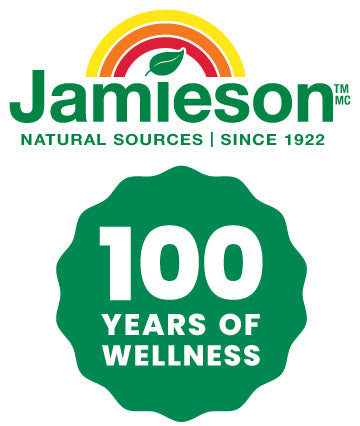Written by: Cheryl Wright, RHN, BA Hon
Family, friends, and social media frequently share advice on ‘how to avoid colds,’ but does science back them up? Below are some common myths vs. effective tips for staying healthy.
4 Myths and 4 Facts to Avoid a Cold
- You’ll catch a cold going outside with wet hair: While it might make you feel cold, going outside with wet hair does not cause a cold. Colds are caused by viruses, not by being cold or wet.¹
- Flus are worse when it gets cold out: A hypothesis is that viruses are common during colder temperatures because we spend more time inside, close to others. This is a factor, but recent research shows humidity is a better predictor of flu rates than actual temperature.²
- Low humidity enhances aerosol influenza transmission, as well as impairing our ability to repair airway tissues.²
- Beyond a good ventilation system, increasing humidity from low to median range reduced respiratory infection rates and absenteeism in both offices and schools; 40–60% relative humidity at room temperature is ideal.²
- You need antibiotics: As colds and flus are generally caused by viruses, taking antibiotics will not help and can contribute to antibiotic resistance.
- According to the World Health Organization people at high risk or with severe symptoms of influenza, should use antiviral medications as soon as possible. This includes those that are pregnant or over 65 years of age, children up to age 5, those living with chronic illnesses or have a suppressed immune system.³
- Feed a cold, starve a fever: There's no scientific evidence to support this advice. In both cases, maintaining a balanced diet and staying hydrated are important for recovery.
- A fever rarely occurs with a cold, whereas it is a common symptom in flus. Other than fever, flus and colds have similar symptoms, instead they differ in intensity and how common they are.⁴
4 Tips Worth Trying
- Rest and sleep: Allowing your body to rest helps it to heal, as well as fight off infections more effectively. Research has shown that those who sleep 6 hours or less per night, have a higher susceptibility to catching the common cold.⁵
- Eat nutritious foods: Consuming a diet rich in fruits, vegetables, and other nutrient-dense foods is important for overall health. Nutrients that help to support immune function include vitamin A, B12, C, D, and the mineral zinc.⁶ When in doubt, a multivitamin is a good year round support; It’s like an insurance policy for nutrients you might lack on days you are unable to eat a balanced diet.
- Use natural herbs: Some traditional herbs (dependent on potency and species) have been shown to be effective in either preventing or helping with common cold symptoms such as garlic, ginger and echinacea:
|
Herb |
Health Canada Statement |
Research |
|
Garlic |
Traditionally used in Herbal Medicine to help relieve symptoms associated with upper respiratory tract infections such as nasal congestion.⁷ |
Reviews have shown high quality evidence that garlic helps prevent influenza.⁸ |
|
Ginger |
Traditionally used in Herbal Medicine as an expectorant and cough suppressant to help relieve bronchitis as well as coughs and colds.⁹ |
Ginger has been shown to prevent vomiting, helping those who are suffering from nausea.¹⁰ |
|
Echinacea |
Echinacea purpurea helps to relieve the symptoms and shorten the duration of upper respiratory tract infections.¹¹
Echinacea angustifolia helps relieve the symptoms of upper respiratory tract infections and sore throats.¹² |
Pharmacology studies on Echinacea have identified antioxidant, immunomodulatory, anti-inflammatory, antifungal, and antiviral activities.¹³
Although there are 9 species of echinacea only 3 have medicinal purposes.¹⁴ This is why quality testing of herbal supplements is crucial. |
- Maintain good hygiene: Regular hand washing, avoiding close contact with sick individuals, and disinfecting commonly touched surfaces can help prevent the spread of viruses. This advice has been emphasized by public health organizations around the world.
If you do catch a cold; stay home and drink plenty of fluids but please seek medical care if your symptoms increase. When unsure of your symptoms or the type of care required, you can dial 8-1-1 to talk to a nurse in your province/territory. (In Manitoba call 1-888-315-9257).
References:
[1] Eccles R. (2023). Common cold. Front Allergy. Jun 22;4:1224988.
2 Moriyama M, Hugentobler WJ, Iwasaki A. (2020). Seasonality of Respiratory Viral Infections. Annu Rev Virol. Sep 29;7(1):83-101.
3 WHO. Influenza (Seasonal). Accessed Sept 16, 2024 at: https://www.who.int/news-room/fact-sheets/detail/influenza-(seasonal)
4 Public Health Agency of Canada. Cold or flu: know the difference / Know the flu facts - Fact sheet
Accessed Sept 16, 2024 at: https://open.canada.ca/data/en/dataset/0c90b549-aa74-4497-8d2d-6766b8a3b74c
5 Prather AA et al. (2015). Behaviorally Assessed Sleep and Susceptibility to the Common Cold. Sleep. Sep 1;38(9):1353-9.
6 Health Canada. Multi-vitamin/Mineral Supplement Monograph. Accessed Sept 17, 2024 at: https://webprod.hc-sc.gc.ca/nhpid-bdipsn/atReq?atid=multi_vitmin_suppl&lang=eng#a421
7 Health Canada. Garlic – Allium Sativum Monograph. Accessed Jan 24, 2024 at: https://webprod.hc-sc.gc.ca/nhpid-bdipsn/atReq.do?atid=garlic_ail&lang=eng
8 Yuan, Y et al. (2021). Interventions for preventing influenza: An overview of Cochrane systematic reviews and a Bayesian network meta-analysis. J Integr Med. 19(6), 503–514.
9 Health Canda. Ginger – Zingiber Officinale Monograph. Accessed Sept 16, 2024 at: https://webprod.hc-sc.gc.ca/nhpid-bdipsn/atReq?atid=ginger.gingembre&lang=eng
10 Anh NH et al. (2020). Ginger on Human health: A Comprehensive Systematic Review of 109 Randomized Controlled Trials. Nutrients. Jan 6;12(1):157.
11 Health Canada. Echinacea Purpurea Monograph. Accessed Sept 18, 2024 at: https://webprod.hc-sc.gc.ca/nhpid-bdipsn/atReq?atid=echinacea.purpurea&lang=eng
12 Health Canada. Echinacea Angustifolia. Accessed Sept 18, 2024 at https://webprod.hc-sc.gc.ca/nhpid-bdipsn/atReq?atid=echinacea.angustifolia&lang=eng
13 Rao Fu R. (2021). Diversity of antioxidant ingredients among Echinacea species, Ind Crops Prod. Vol 170. 113699.
14 Ng, JY et al.(2023). Characteristics of the Echinacea Spp. research literature: A bibliometric analysis, Eur J Int Med. Vol 57,102216.



